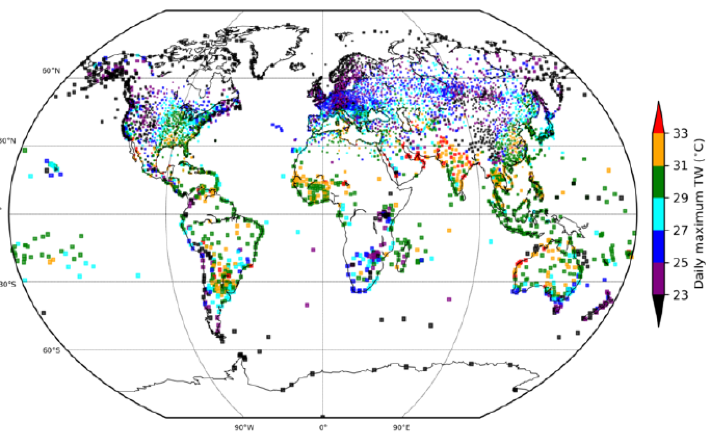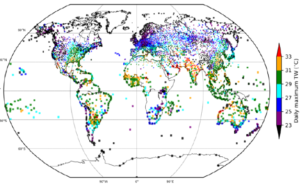
The human ability to remove heat efficiently has allowed humanity to spread across all continents. However, the combination of high humidity and temperature values in a natural environment has always marked our physiological limit to conquer the planet.
According to a recent scientific research, published in the specialized journal “Science Advances” (May 8, 2020, DOI: 10.1126 / sciadv.aaw1838) and developed by a group of climate scientists from the US and UK, wet bulb temperature values (air temperature in a humidity-saturated environment, TW)* between 27°C and 35°C has serious impacts on health and productivity. Exceeding the 35°C threshold is our natural human physiological limit.
Climate models project the first occurrences of wet bulb temperatures above 35°C for the middle of the 21st century. However, the exhaustive evaluation of the meteorological station data shows that in some subtropical and coastal localities they have already reported wet bulb temperature values above 35°C.

Figure: The figure shows the extreme wet heat (TW) ever recorded at meteorological stations, in the period 1979-2017, for stations with at least 50% data availability during this period. The size of the marker is inversely proportional to the density of the station. Note that wet heat values above the human physiological limit (red dots) have already been recorded in regions of western Mexico, in the central subtropics of South America, southern Asia, and the Middle East coast (coasts of the Persian Gulf). [Credit: Figura S1 from DOI: 10.1126/sciadv.aaw1838]
The study also shows that extreme wet heat in general has more than doubled in frequency since 1979. In part, recent sea surface temperatures above 35°C have provided additional support for dangerously high temperature values of the wet bulb.
These extreme wet heat events are highly localized in both space and time. This is why climate models substantially underestimate these values. These results – the researchers highlight – underscore the serious challenge posed by humid heat, which turns out to be more intense than previously known and will become increasingly severe in the coming decades.
*The thermometer 🌡 has a bulb on the bottom. It is wrapped with a wet muslin, if the air is not saturated the water begins to evaporate, and the process produces heat absorption, therefore the temperature measured by the thermometer drops slightly compared to that recorded without wet muslin (dry bulb) ). Thus one has for each moment a dry bulb temperature (the air temperature itself) and the wet bulb temperature (which is less than or equal to the previous one). The difference between one record and another gives information on the air moisture content. The wet bulb temperature gives information on the heat and humidity contained in the parcel of air being measured.